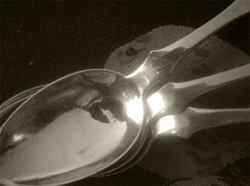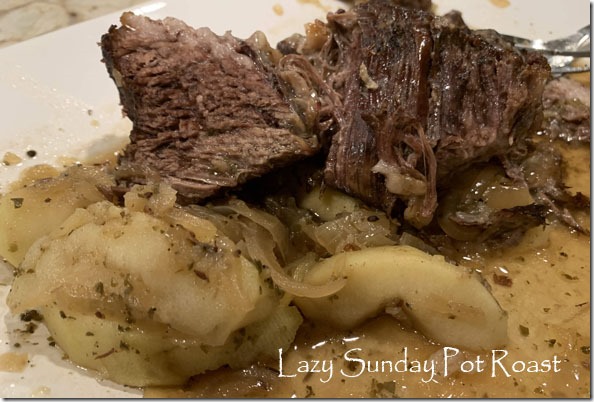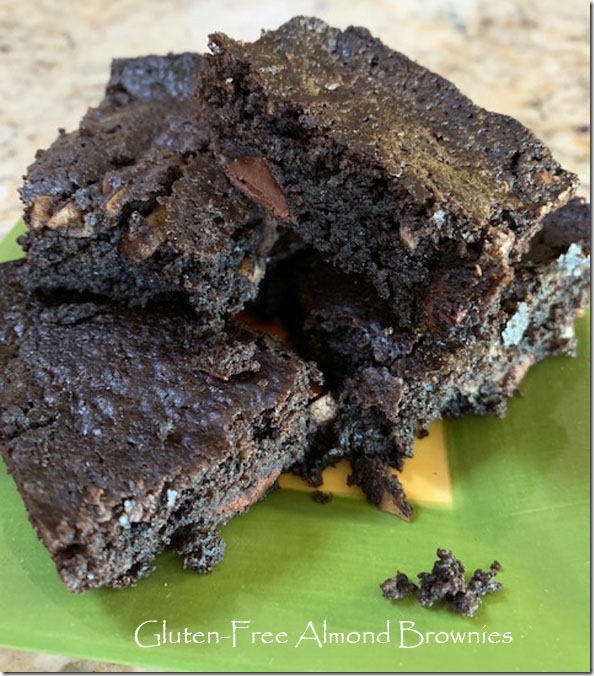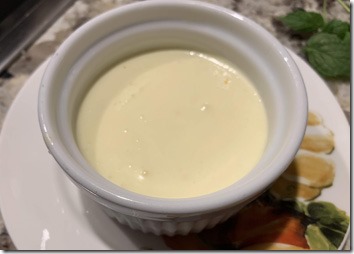Remember? Brown food doesn’t look so great in a picture! But oh, this one’s worth the effort, and it doesn’t take much to make this pot roast dinner.
Even though I eat a somewhat restricted set of foods, there are lots of things I can make and enjoy. Last night I had a group of friends over for dinner and made this pot roast, a tabouli salad made with millet, Brussels sprouts with bacon, golden raisins and pomegranate seeds, a type of dip – called a hummus because of its texture – but made with zucchini, and then I made a strawberry black pepper refrigerator cake. The only thing I made that wasn’t on my diet was the dessert. But I had some anyway. Well, I suppose I’m not to have pot roast, either (too much fat) but I did.
I still subscribe to a bunch of blogs, and truly, as I scan through them I can often whiz right past because they have foods that I’m not supposed to eat on this anti-lectin, Gundry diet. I’m a sucker, though, for an interesting story, and this one was just so special. Written by John “Doc” Willoughby, I was hooked from the first words. If you’re interested, click HERE, to the full story. In a nutshell, Doc knew from when he was a child, that he loved his Grandmother’s pot roast, but he never knew much about what was in it. After his grandmother passed away, Doc inherited her collection of cookbooks and recipes. And then he found the old 3×5 card with the recipe on it. Since then, he’s made this pot roast countless times, and often for company, because he says it’s pretty foolproof, AND it’s easy.
The recipe, on the surface, looks kind of mundane. But oh, it’s not. He explains that he’s made it without the caraway seeds, and without the marjoram, and he says the finished product doesn’t measure up. So, those herbs/spices are essential to the result. First, buy a 4-pound chuck eye roast. Pat it dry with paper towels, salt and pepper it, then sear it in oil in a big, lidded Dutch oven type pan. Remove the meat, then sauté 2 onions, halved and sliced, then you add in the other ingredients – broth, brown sugar, the caraway seeds and marjoram (I used dried), some bay leaves, and some apple cider vinegar. The roast is nestled in there, and more broth is added if needed, to bring the liquid level up halfway on the roast (mine needed about another 3/4 cup of water). Into a 300°F oven it went (covered) and baked for 3 hours. I removed it and turned the roast twice. Then you add 3 Granny Smith (or similar type) apples, cored and peeled, then sliced and cut in 8ths, cover and bake for another 15-20 minutes, until the apples kind of puff up. A few of them fell apart in my pot, and some hardly seemed done, but they were.
The only kind-of-sort-of hard part was getting that 4-lb. roast out of the pot – it was hot and heavy and it fell apart. But oh well. It’s supposed to rest for 10-15 minutes before you serve it, so I put it out on the platter and covered it with foil while I wrestled with the good stuff left in the pot – the apples, onions and flavorful broth. It took a bit of doing – and my friend Judy helped me some – to remove some of the fat. I have a fat separator which helped, but the onions kept clogging up the sieve part. But we managed. The apples and onions went out onto the platter (see photo) and some of the broth swam all over the platter as well. The strained, somewhat de-fatted broth went into a pitcher to pass at the table.
What’s interesting is that none of us – me included – could taste the caraway or the marjoram. That was kind of astounding to me – I pride myself on being able to detect flavors. Couldn’t find it at all in this dish. With the list of ingredients, I’d guess this recipe has German origins (the caraway, apples and apple cider vinegar are the clues), but the marjoram makes me think France. But no matter, this dish comes together well. There’s a lot of liquid left over, so I’ll probably make some kind of soup with it – maybe with some of the left over pot roast cut into little cubes (if I can, as the meat is meltingly tender).
What’s GOOD: the flavor – oh my yes – so tasty. You can detect the sweet (brown sugar) and the apples impact a delectable flavor to the overall dish. It was perfectly tender, and I liked having a dish that offered the apples to serve alongside, with the very tender onions too. It was easy. The article actually suggested making it the day before up to the apple-adding step, then reheating it and baking for 15-20 minutes. I wasn’t so sure that was a good idea – so I made it the day of. Will I make this again? Absolutely, although probably not for myself. Only for company, I’d say. I’m sure you could make a smaller one – say a 2 1/2 pound roast, however.
What’s NOT: nothing really, except that you need to plan ahead several hours. But that’s not news to anyone who’s made a pot roast before. There were no complaints from anyone.
printer-friendly PDF and MasterCook 15/16 file (click link to open recipe)
* Exported from MasterCook *
Lazy Sunday Pot Roast
Recipe By: John “Doc” Willoughby, from his grandmother Schwyhart
Serving Size: 8
4 pounds boneless beef chuck eye roast Salt and freshly cracked black pepper to taste
2 tablespoons oil
2 medium onions — halved and thinly sliced
3 bay leaves
1 tablespoon caraway seeds
1/4 cup brown sugar
1/4 cup fresh marjoram — or 2 tablespoons dried
1/2 cup apple cider vinegar
2 cups low sodium beef broth — or chicken stock (2 to 2 1/2)
3 Granny Smith apples — or other tart apples such as Cortlands or Baldwins, quartered, cored, and peeled
1. Preheat oven to 300°F.
2. Dry the roast well with paper towels, sprinkle it very generously with salt and pepper. Heat the oil in a Dutch oven or other large, ovenproof pot over medium high heat until shimmering. Add the roast and brown well on all sides—this should take at least 10 or 12 minutes—then remove to a platter and set aside.
3. Add the onions to the pot and saute, stirring frequently, until translucent, 7 to 9 minutes. Put the meat back in the pot, add the bay leaves, caraway seeds, brown sugar, marjoram, vinegar, and enough stock so that the liquid comes just halfway up the sides of the meat. Bring just to a simmer then cover, put in the preheated oven, and cook for 2-1/2 hours, turning over once or twice during this time.
4. Add the apples to the pot and continue to cook until the apples are soft and puffed up and the meat is very tender, about 15 minutes. To check the meat for doneness: Plunge a fork straight down into the meat and try to pull the fork out; if the fork slides out easily, the meat is done; if the meat hangs on to the fork, give it more time.
5. Remove meat, cover it loosely with foil, and let it rest for at least 10 minutes. Skim the fat from the braising liquid and season to taste with salt and pepper. Cut the meat into thick slices and serve, accompanied by the apples, onions and the braising liquid. Strain some of the broth, if possible, and pass it at the table.
Per Serving: 490 Calories; 20g Fat (35.7% calories from fat); 65g Protein; 15g Carbohydrate; 2g Dietary Fiber; 184mg Cholesterol; 199mg Sodium.








 Chaffles were invented by someone on a keto diet, and the early ones (I guess) were made with shredded mozzarella cheese and a kind of egg batter. But cooks more inventive than I am figured out a way to make them without cheese (although these above I did make with a tiny bit of cheese). They’re a cinch to make, as I explained a few weeks ago when I suggested you go look up the
Chaffles were invented by someone on a keto diet, and the early ones (I guess) were made with shredded mozzarella cheese and a kind of egg batter. But cooks more inventive than I am figured out a way to make them without cheese (although these above I did make with a tiny bit of cheese). They’re a cinch to make, as I explained a few weeks ago when I suggested you go look up the 


















Leave a Comment!